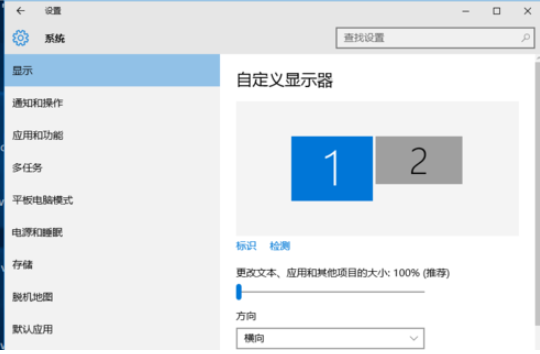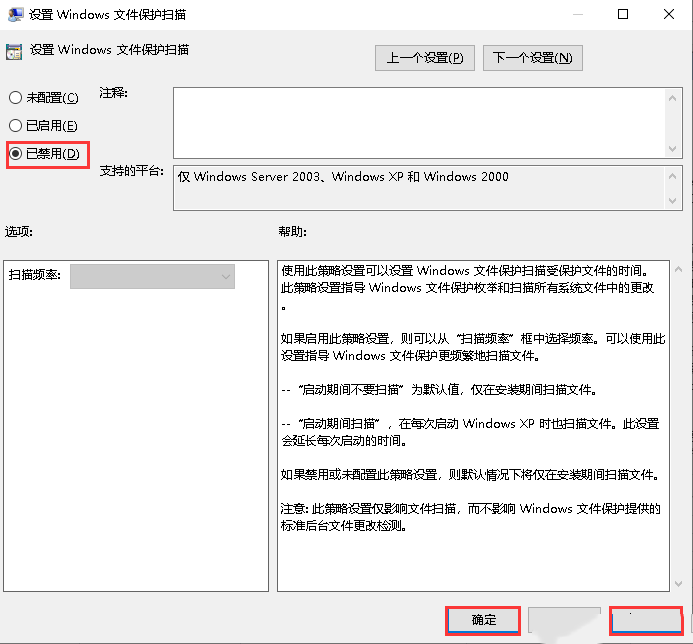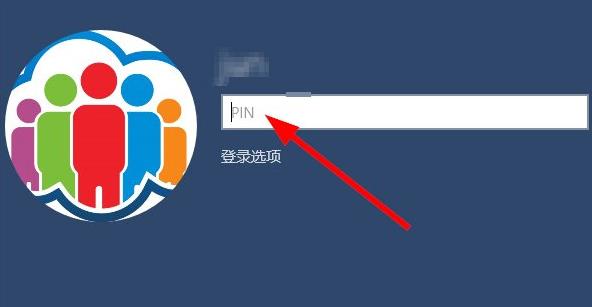Linuxssh命令详解
Linux ssh命令详解
SSH(远程连接工具)连接原理:ssh服务是一个守护进程(demon),系统后台监听客户端的连接,ssh服务端的进程名为sshd,负责实时监听客户端的请求(IP 22端口),包括公共秘钥等交换等信息。

ssh服务端由2部分组成: openssh(提供ssh服务) openssl(提供加密的程序)
ssh的客户端可以用 XSHELL,Securecrt, Mobaxterm等工具进行连接
SSH的工作机制
服务器启动的时候自己产生一个密钥(768bit公钥),本地的ssh客户端发送连接请求到ssh服务器,服务器检查连接点客户端发送的数据和IP地址,确认合法后发送密钥(768bits)给客户端,此时客户端将本地私钥(256bit)和服务器的公钥(768bit)结合成密钥对key(1024bit),发回给服务器端,建立连接通过key-pair数据传输。
- 1.远程Server收到Client端用户TopGun的登录请求,Server把自己的公钥发给用户。
- 2.Client使用这个公钥,将密码进行加密。
- 3.Client将加密的密码发送给Server端。
- 4.远程Server用自己的私钥,解密登录密码,然后验证其合法性。
- 5.若验证结果,给Client相应的响应
Client端如何保证接受到的公钥就是目标Server端的?
- 1.Client将自己的公钥存放在Server上,追加在文件authorized_keys中。
- 2.Server端接收到Client的连接请求后,会在authorized_keys中匹配到Client的公钥pubKey,并生成随机数R,用Client的公钥对该随机数进行加密得到pubKey(R),然后将加密后信息发送给Client。
- 3.Client端通过私钥进行解密得到随机数R,然后对随机数R和本次会话的SessionKey利用MD5生成摘要Digest1,发送给Server端。
- 4.Server端会也会对R和SessionKey利用同样摘要算法生成Digest2。
- 5.Server端会最后比较Digest1和Digest2是否相同,完成认证过程。
SSH的加密技术
加密技术:传输过程,数据加密。1.SSH1没有对客户端的秘钥进行校验,很容易被植入恶意代码2.SSH2增加了一个确认联机正确性的Diffe_Hellman机制,每次数据的传输,Server都会检查数据来源的正确性,避免黑客入侵。SSH2支持RSA和DSA密钥DSA:digital signature Algorithm 数字签名RSA:既可以数字签名又可以加密
SSH知识小结
1.SSH是安全的加密协议,用于远程连接Linux服务器2.SSH的默认端口是22,安全协议版本是SSH23.SSH服务器端主要包含2个服务功能SSH连接和SFTP服务器4.SSH客户端包含ssh连接命令和远程拷贝scp命令等
如何防止SSH登录入侵
1.密钥登录,更改端口2.牤牛阵法3.监听本地内网IP(ListenAddress 192.168.25.*)
SSH功能大全
1.登录
ssh -p22 omd@192.168.25.137
2.直接执行命令 -->最好全路径
ssh root@192.168.25.137 ls -ltr /backup/data
==>ssh root@192.168.25.137 /bin/ls -ltr /backup/data
3.查看已知主机
cat /root/.ssh/known_hosts
4.ssh远程执行sudo命令
ssh -t omd@192.168.25.137 sudo rsync hosts /etc/
5.scp
1.功能 -->远程文件的安全(加密)拷贝
scp -P22 -r -p /home/omd/h.txt omd@192.168.25.137:/home/omd/
2.scp知识小结
scp是加密远程拷贝,cp为本地拷贝
可以推送过去,也可以拉过来
每次都是全量拷贝(效率不高,适合第一次),增量拷贝用rsync
6.ssh自带的sftp功能
1.Window和Linux的传输工具
wincp filezip
sftp -->基于ssh的安全加密传输
samba
2.sftp客户端连接
sftp -oPort=22 root@192.168.25.137
put /etc/hosts /tmp
get /etc/hosts /home/omd
3.sftp小结:
1.linux下使用命令: sftp -oPort=22 root@x.x.x.x
2.put加客户端本地路径上传
3.get下载服务器端内容到本地
4.远程连接默认连接用户的家目录
ssh常见命令参数
usage: ssh [-1246AaCfgKkMNnqsTtVvXxYy] [-b bind_address] [-c cipher_spec]
[-D [bind_address:]port] [-e escape_char] [-F configfile]
[-i identity_file] [-L [bind_address:]port:host:hostport]
[-l login_name] [-m mac_spec] [-O ctl_cmd] [-o option] [-p port]
[-R [bind_address:]port:host:hostport] [-S ctl_path]
[-W host:port] [-w local_tun[:remote_tun]]
[user@]hostname [command]
关于后台ssh服务的相关
查询openssl软件
rpm -qa openssh openssl
查询sshd进程
ps -ef | grep ssh
--> /usr/sbin/sshd
查看ssh端口
netstat -lntup | grep ssh
ss | grep ssh (效果同上,同下,好用)
netstat -a | grep ssh(记住这个)
netstat -lnt | grep 22 ==> 查看22端口有没有开/ssh服务有没有开启
技巧: netstat -lnt | grep ssh | wc -l -->只要大于2个就是ssh服务就是好的
查看ssh的秘钥目录
ll /root/.ssh/known_hosts 当前用户家目录的.ssh目录下
ssh的配置文件
cat /etc/ssh/sshd_config
ssh服务的关闭
service sshd stop
ssh服务的开启:
service sshd start
ssh服务的重启
service sshd reload [停止进程后重启] ==> 推荐
service sshd restart [干掉进程后重启] ==> 不推荐
ssh远程登录
ssh 192.168.1.100 默认利用当前宿主用户的用户名登录
ssh omd@192.168.1.100 利用远程机的用户登录
ssh omd@192.168.1.100 -o stricthostkeychecking=no 首次登陆免输yes登录
ssh omd@192.168.1.100 "ls /home/omd" 当前服务器A远程登录服务器B后执行某个命令
ssh omd@192.168.1.100 -t "sh /home/omd/ftl.sh" 当前服务器A远程登录服务器B后执行某个脚本
ssh免密设置
1、进入用户的家目录
[root@localhost ~] cd /root/.ssh/ 【root用户就在root目录下的.ssh目录】
[root@localhost ~] cd /home/omd/.ssh/ 【普通用户就是在家目录下的.ssh目录】
2、根据DSA算法生成私钥和公钥【默认建立在当前用户的家目录】
[root@localhost .ssh] ssh-keygen -t dsa 一路回车即可
id_dsa -->私钥(钥匙)
id_dsa.pub -->公钥(锁)
3.拷贝公钥给目标服务器
[root@localhost .ssh] ssh-copy-id -i id_dsa.pub omd@192.168.25.110 【 使用ssh登录的默认端口22】
[root@localhost .ssh] ssh-copy-id -i id_dsa.pub –p 666 omd@192.168.25.120 【使用ssh登录设置的端口666】
4. 查看目标服务器生成的文件
[omd@localhost .ssh]$ ll /home/omd/.ssh/authorized_keys
5. 免密码登录目标服务器
ssh omd@192.168.25.110
6. 总结一下钥匙和锁的关系
1.多个钥匙开一把锁
把id_dsa.pub 复制给各个服务器
2.一个钥匙开duobasuo
把id_dsa 传给各个服务器
把id_dsa 传给自己
ssh排查问题
1.判断物理链路是否通 ping 192.168.25.130 线路 | 防火墙 | 是否同一个网的
ping 本身是icmp协议
2.判断服务是否正常
telnet 192.168.25.130 22
3.Linux防火墙
service iptables status ==> /etc/init.d/iptables status
4.打开ssh的调测进行观察
ssh -vvv omd@192.168.1.100
SSH批量分发与管理方案小结
1.利用root做ssh key验证
优点:简单,易用缺点:安全性能差,无法禁止root远程连接
2.利用普通用户omd -->推荐
思路:把要分发的文件拷贝到服务器用户的家目录,然后利用sudo提权拷贝分发的文件和对应目录优点:安全缺点:复杂,配置麻烦1.sudo提权echo omd All=(All) NOPASSWD:/usr/bin/rsync >> /etc/sudoersvisudo -cgrep omd /etc/sudoers2.ssh分发到服务器的家目录ssh -p22 -r /etc/hosts omd@192.168.25.137:~3.ssh使用sudo复制到目标服务器的/etcssh -t omd@192.168.25.137 sudo rsync hosts /etc/
3.拓展方案2,不用sudo,而是设置suid对固定命令提权
优点:相当安全缺点:复杂,安全性较差,任何人都可以处理带有suid权限的命令1.which rsync2.chmod 4755 /usr/bin/rsync
ssh章节小结
1.ssh远程的加密连接协议,相关软件openssh,openssl2.默认端口223.ssh版本协议4.服务器ssh连接,ftp连接,sshd守护进程,开机启动5.ssh客户端重要命令:ssh(用户登录&&远程命令),scp,sftp,6.安全验证方式:口令,密钥 学习原理7.ssh服务优化:改端口,改监听,no root,no empty,no DNS,8.ssh密钥对,公钥在服务器端,私钥在客户端
修改ssh服务的启动文件sshd的几个点
1-1修改 /etc/ssh/sshd_config
GSSAPIAuthentication yes 解决一台服务器管理多个ssh服务
UseDNS no 加快响应速度因为在内网环境下
PermitRootLogin no 不运行root用户直接登录
Port 11544 更改访问端口号
ListenAddress 192.168.25.130 只监听内网的IP
Match User anoncvs 当前环境允许登录的用户
PermitRootLogin no 是否允许root用户登录,一般不允许开
1-2重启服务
service sshd restart 写入命令进内存
service sshd reload(优先) reload是一个平滑的访问,不影响用户使用
1-3查看连接端口
netstat -an | grep EST
SSH跳过HostKeyChecking,不用输入yes
SSH跳过输入ssh跳过RSA key fingerprint输入yes/no
在配置大量的节点之间需要ssh连通的时候,如果自动复制很多节点,都需要输入yes,两两节点之间都要互通一次,这样会造成很大的麻烦
解决1;修改配置文件/etc/ssh/ssh_config
找 到 StrictHostKeyChecking ask
修改为:StrictHostKeyChecking no
解决2:添加参数 –o 【o=option】
ssh root@192.168.25.133 -o "StrictHostKeyChecking no"
scp -o "StrictHostKeyChecking no" newfile.txt root@192.168.25.133:/root
ssh带密码登录之sshpass的安装
【下载地址】https://sourceforge.net/projects/sshpass/files/latest/download
上传文件到服务器
CentOS下安装:
[root@localhost ~] tar xf sshpass-1.06.tar.gz
[root@localhost ~] cd sshpass-1.06
[root@localhost sshpass-1.06] ./configure
[root@localhost sshpass-1.06] make && make install
检查是否安装成功:
[root@localhost sshpass-1.06] which sshpass
/usr/local/bin/sshpass
远程登录主机:
sshpass -p FTL600@HH ssh omd@192.168.25.110 -o "StrictHostKeyChecking no"
注意:如果是第一次登录,需要输入手动yes,此时sshpass并不会给提示,所以登录异常
Ubuntu下安装方法一[推荐]:简单
omd@omd-virtual-machine:~/sshpass-1.06$ sudo apt install sshpass
安装成功:
omd@omd-virtual-machine:~/sshpass-1.06$ which sshpass
Ubuntu下安装方法二:
omd@omd-virtual-machine:~$ tar xf sshpass-1.06.tar.gz
omd@omd-virtual-machine:~$ cd sshpass-1.06/
omd @omd-virtual-machine:~/sshpass-1.06$ ./configure
omd@omd-virtual-machine:~/sshpass-1.06$ sudo make && make install
其同CentOS下安装
附ssh的配置文件
/etc/ssh/sshd_config
[root@localhost .ssh] cat /etc/ssh/sshd_config
$OpenBSD: sshd_config,v 1.80 2008/07/02 02:24:18 djm Exp $
This is the sshd server system-wide configuration file. See
sshd_config(5) for more information.
This sshd was compiled with PATH=/usr/local/bin:/bin:/usr/bin
The strategy used for options in the default sshd_config shipped with
OpenSSH is to specify options with their default value where
possible, but leave them commented. Uncommented options change a
default value.
Port 22
AddressFamily any
ListenAddress 0.0.0.0
ListenAddress ::
Disable legacy (protocol version 1) support in the server for new
installations. In future the default will change to require explicit
activation of protocol 1
Protocol 2
HostKey for protocol version 1
HostKey /etc/ssh/ssh_host_key
HostKeys for protocol version 2
HostKey /etc/ssh/ssh_host_rsa_key
HostKey /etc/ssh/ssh_host_dsa_key
Lifetime and size of ephemeral version 1 server key
KeyRegenerationInterval 1h
ServerKeyBits 1024
Logging
obsoletes QuietMode and FascistLogging
SyslogFacility AUTH
SyslogFacility AUTHPRIV
LogLevel INFO
Authentication:
LoginGraceTime 2m
PermitRootLogin yes
StrictModes yes
MaxAuthTries 6
MaxSessions 10
RSAAuthentication yes
PubkeyAuthentication yes
AuthorizedKeysFile .ssh/authorized_keys
AuthorizedKeysCommand none
AuthorizedKeysCommandRunAs nobody
For this to work you will also need host keys in /etc/ssh/ssh_known_hosts
RhostsRSAAuthentication no
similar for protocol version 2
HostbasedAuthentication no
Change to yes if you dont trust ~/.ssh/known_hosts for
RhostsRSAAuthentication and HostbasedAuthentication
IgnoreUserKnownHosts no
Dont read the users ~/.rhosts and ~/.shosts files
IgnoreRhosts yes
To disable tunneled clear text passwords, change to no here!
PasswordAuthentication yes
PermitEmptyPasswords no
PasswordAuthentication yes
Change to no to disable s/key passwords
ChallengeResponseAuthentication yes
ChallengeResponseAuthentication no
Kerberos options
KerberosAuthentication no
KerberosOrLocalPasswd yes
KerberosTicketCleanup yes
KerberosGetAFSToken no
KerberosUseKuserok yes
GSSAPI options
GSSAPIAuthentication no
GSSAPIAuthentication yes
GSSAPICleanupCredentials yes
GSSAPICleanupCredentials yes
GSSAPIStrictAcceptorCheck yes
GSSAPIKeyExchange no
Set this to yes to enable PAM authentication, account processing,
and session processing. If this is enabled, PAM authentication will
be allowed through the ChallengeResponseAuthentication and
PasswordAuthentication. Depending on your PAM configuration,
PAM authentication via ChallengeResponseAuthentication may bypass
the setting of "PermitRootLogin without-password".
If you just want the PAM account and session checks to run without
PAM authentication, then enable this but set PasswordAuthentication
and ChallengeResponseAuthentication to no.
UsePAM no
UsePAM yes
Accept locale-related environment variables
AcceptEnv LANG LC_CTYPE LC_NUMERIC LC_TIME LC_COLLATE LC_MONETARY LC_MESSAGES
AcceptEnv LC_PAPER LC_NAME LC_ADDRESS LC_TELEPHONE LC_MEASUREMENT
AcceptEnv LC_IDENTIFICATION LC_ALL LANGUAGE
AcceptEnv XMODIFIERS
AllowAgentForwarding yes
AllowTcpForwarding yes
GatewayPorts no
X11Forwarding no
X11Forwarding yes
X11DisplayOffset 10
X11UseLocalhost yes
PrintMotd yes
PrintLastLog yes
TCPKeepAlive yes
UseLogin no
UsePrivilegeSeparation yes
PermitUserEnvironment no
Compression delayed
ClientAliveInterval 0
ClientAliveCountMax 3
ShowPatchLevel no
UseDNS yes
PidFile /var/run/sshd.pid
MaxStartups 10
PermitTunnel no
ChrootDirectory none
no default banner path
Banner none
override default of no subsystems
Subsystem sftp /usr/libexec/openssh/sftp-server
Example of overriding settings on a per-user basis
Match User anoncvs
X11Forwarding no
AllowTcpForwarding no
ForceCommand cvs server
我告诉你msdn版权声明:以上内容作者已申请原创保护,未经允许不得转载,侵权必究!授权事宜、对本内容有异议或投诉,敬请联系网站管理员,我们将尽快回复您,谢谢合作!










